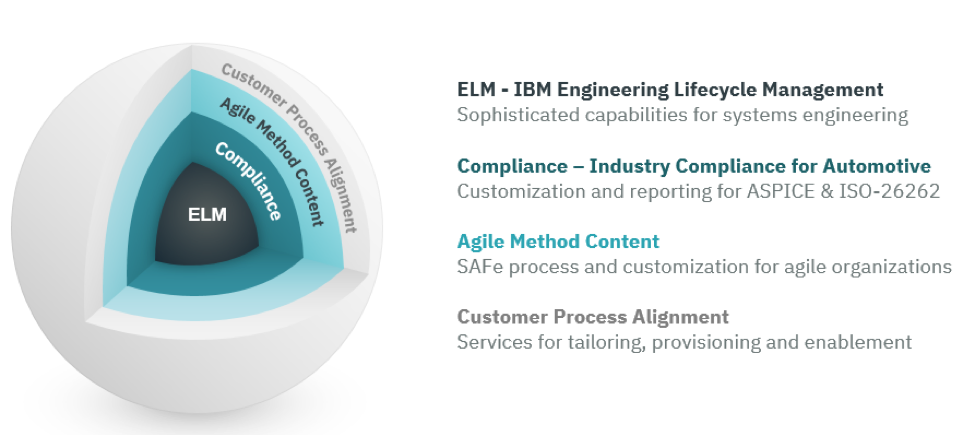IBM Engineering Lifecycle Management – MQ
Achieve compliance at enterprise scale with
IBM Engineering Lifecycle Management solutions
IBM Engineering Lifecycle Management (ELM) is a set of integrated tools that work together to offer full traceability across the engineering process.
Accelerate delivery
Real-time planning provides visibility and management across requirements, application development, design and test efforts—and integrates with execution—to boost collaboration and responsiveness.
Improve quality
Lifecycle traceability raises awareness and provides visibility to related artifacts to improve decisions and offers a view of completeness from requirement through release.
Faster time to value
Utilize the Cloud to get up and running faster and focus on technological innovation.
Deliver value across teams
Collaborative tooling supports multiple technologies, platforms and processes to help you orchestrate and deliver value across teams, roles and disciplines.
Make the right decisions
Gain a single source of truth with dashboards and analytics to help you respond rapidly to both positive and negative indicators in your projects.

IBM Engineering Lifecycle Requirements Management
Requirements:
Requirements are implemented by iteration plans and validated by test plans.
Requirements are elicited, documented, elaborated, and validated by analysts. Their implementation progress is tracked in work items, and their correctness is validated by test cases.
Requirements are elicited, documented, elaborated, and validated by analysts. Their implementation progress is tracked in work items, and their correctness is validated by test cases.
Implementation:
Project managers and development managers use iteration plans to implement requirements in the context of a development schedule.
Team leads plan the iterations using iteration plans, where the work is divided further into tasks.
Developers work on defects that are submitted by testers as a result of test execution.
Team leads plan the iterations using iteration plans, where the work is divided further into tasks.
Developers work on defects that are submitted by testers as a result of test execution.
Testing:
The test team links requirements to test plans and test cases.
Testers link test cases to work items to ensure coverage of the implementation.
Testers run test cases and submit defects for test failures.
Testers link test cases to work items to ensure coverage of the implementation.
Testers run test cases and submit defects for test failures.
Why should you choose IBM Engineering Lifecycle Management?

JDW offers a no cost, no compromise Security Assessment
Let JDW Consulting understand your business, analyze your security environment and perform a full assessment of the security standpoint of your business that will give you peace of mind.
After our assessment we will present our results, detail any gaps found and explain our recommended plan of action
We are committed to provide the best Solutions for your Business
JDW thoroughly tests all of the solutions we represent internally before offering them to our clients. Our internal validation and use case scenario based solution validation procedures ensure that what we offer you works as the manufacturer intends it to. We make sure there will be no surprises after you invest in our offerings.
Our Client's Testimonials
"JDW has been working for our Security and Access Control department for over eleven years in a multitude of projects; from identity management to threat and fraud mitigation. It would have been very complex to be able to solve most of our business problems with their expertise, guidance and fast response. Their management is top notch and present every time"
Security DirectorBank

